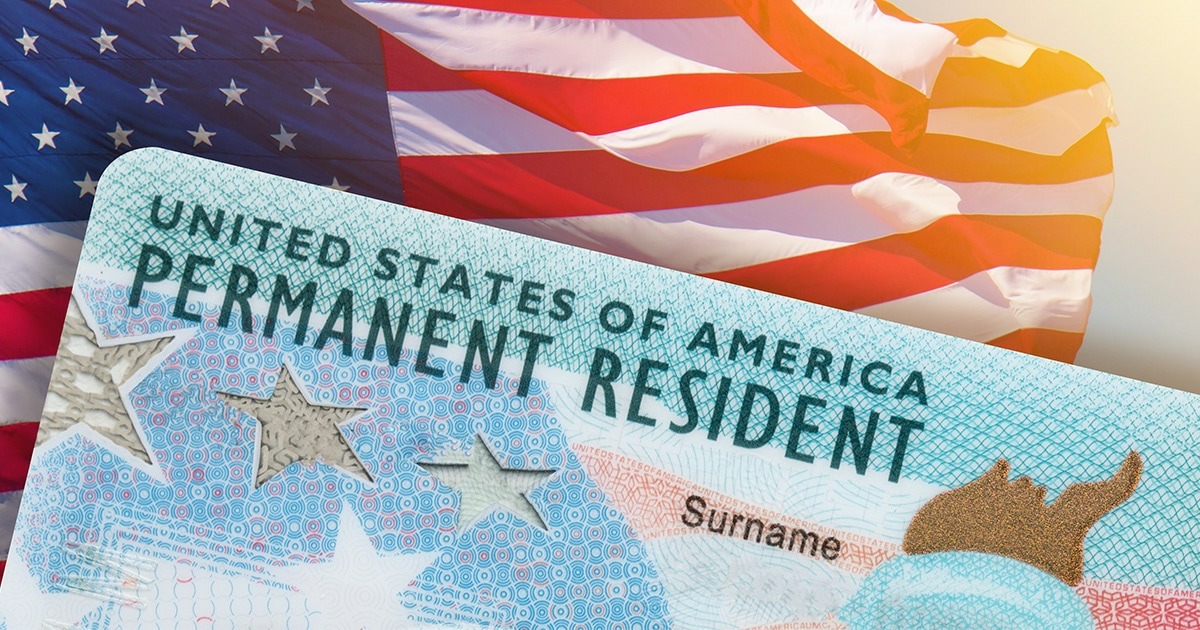Residing In The United States Permanently – Complete Guide to Getting a U.S. Green Card and Building Your Future

The idea of residing in the United States permanently is one of the most common dreams around the world. For many people, it represents opportunity, freedom, and a chance to build a new life in a country known for innovation, diversity, and prosperity. Whether you want to work, study, or simply live in a safe and progressive environment, becoming a permanent resident of the United States is the key that opens all those doors.
But here is the thing. Getting there takes time, preparation, and a clear understanding of how the U.S. immigration system works. Residing in the United States permanently means obtaining what is commonly known as a Green Card, the legal document that gives you the right to live and work in the country indefinitely.
This guide walks you through everything you need to know, what permanent residency means, the pathways available, how to apply, and what life looks like once you get there.
Understanding What It Means To Reside In The United States Permanently
When you obtain a Green Card, you become a lawful permanent resident of the United States. That status allows you to live and work anywhere in the country, study at any institution, own property, and enjoy many of the same rights as U.S. citizens. You can also travel in and out of the country freely, as long as you maintain your residency obligations.
Permanent residency is often the first major milestone on the path to U.S. citizenship. Once you have lived in the country for a certain number of years, you can apply to become a citizen and gain full rights, including voting. But before reaching that stage, you need to qualify for and successfully obtain your Green Card.
Main Pathways To Residing In The United States Permanently
The United States offers several routes to permanent residency, each designed for different circumstances. The most common pathways are family sponsorship, employment based immigration, the Diversity Visa Lottery, refugee or asylum status, and special immigrant categories. Understanding which one fits your situation is the first real step toward success.
Family Based Immigration
This is one of the most established ways of residing in the United States permanently. If you have close family members who are U.S. citizens or permanent residents, they may be able to sponsor you for a Green Card. The process depends on your relationship with the sponsor.
Immediate relatives such as spouses, unmarried children under 21, and parents of U.S. citizens are given top priority and do not face annual visa limits. Other family members, like adult children or siblings, fall under family preference categories, which have longer waiting times.
Family sponsorship is more than just paperwork; it is a commitment. The sponsoring relative must demonstrate the ability to financially support the applicant and ensure they will not depend on government aid.
Employment Based Immigration
For skilled workers, professionals, and investors, the employment based category is one of the most direct ways to move to America permanently. The U.S. immigration system divides employment based Green Cards into five preference levels, known as EB1 through EB5.
EB1 is for individuals with extraordinary ability in fields like science, art, education, business, or athletics. EB2 covers professionals with advanced degrees or exceptional ability. EB3 applies to skilled workers and professionals, while EB4 is for special immigrants such as religious workers and certain international employees.
EB5 is for investors who are willing to make a significant financial investment in a U.S. business that creates jobs for American workers. This category is often used by entrepreneurs and business owners who want both residency and the opportunity to expand their ventures in the United States.
The Diversity Visa Lottery Program
Every year, the United States government runs the Diversity Immigrant Visa Program, often known as the Green Card Lottery. It was created to encourage immigration from countries with historically low immigration rates to the U.S.
Winners are selected randomly, but they must still meet specific eligibility criteria, including education or work experience requirements. For many, this program represents a once in a lifetime opportunity to reside in the United States permanently without needing family or employer sponsorship.
Humanitarian And Refugee Programs
The U.S. has long been a place of refuge for those fleeing persecution, conflict, or disaster. If you qualify for refugee or asylum status, you may eventually apply for permanent residency. Refugees can apply for a Green Card one year after being admitted to the country, while asylees can apply after being granted asylum.
This route is grounded in compassion and human rights, aligning with the country’s long tradition of offering safety to those in need.
Special Immigrant Categories
There are also other less common paths to residing in the United States permanently. These include certain international employees, religious workers, Afghan or Iraqi nationals who assisted the U.S. government, and others who meet very specific conditions.
Though smaller in number, these categories remain important for people who fall outside standard immigration programs but still have strong connections to the U.S.
Meeting The Eligibility Requirements
To reside in the United States permanently, applicants must meet several eligibility requirements. These include background and security checks, medical examinations, financial stability, and adherence to U.S. immigration laws.
Most applicants are also required to have a sponsor, either a family member, an employer, or in some cases, their own investment. Financial sponsorship ensures that new immigrants have support when they arrive and do not become dependent on public funds.
Language proficiency, while not a formal requirement for residency, can make a big difference in how smoothly you settle into American society and find employment.
The Application Process Explained
Applying for a Green Card involves multiple steps. The process usually begins with filing a petition. If you are applying through a family member, your sponsor files Form I130. If you are applying through employment, your employer files Form I140.
Once the petition is approved, you either apply for an immigrant visa at a U.S. consulate abroad if you are outside the country, or adjust your status if you are already in the U.S. The form for adjustment of status is Form I485.
After submitting your documents, attending your biometrics appointment, and possibly an interview, the U.S. Citizenship and Immigration Services makes a final decision. If approved, you receive your Green Card, your official proof of permanent residency.
Processing times can vary widely depending on the category and your home country, but accuracy and completeness are crucial. Errors or missing information can delay your application for months.
Benefits Of Residing In The United States Permanently
The benefits of residing in the United States permanently go far beyond legal rights. As a Green Card holder, you can live and work anywhere in the country without needing sponsorship or additional permits. You gain access to social security benefits, public education, and some government programs.
You can also sponsor certain family members to join you, travel more freely, and apply for citizenship after meeting residency requirements. For many, the U.S. represents a stable, secure environment where effort and ambition are rewarded.
Healthcare access, educational opportunities, and professional freedom are major draws. Many permanent residents also highlight the personal freedom to explore diverse career paths, relocate easily within the country, and enjoy legal protection under U.S. laws.
Challenges You Might Face On The Journey
No immigration process is simple. Moving to the United States permanently comes with challenges, including long waiting times, complex paperwork, and adapting to a new culture.
Housing costs can be high in major cities like New York, Los Angeles, or San Francisco. Understanding U.S. tax rules and credit systems takes time. And depending on your background, adjusting to a new work culture can also take effort.
But these challenges are manageable with preparation. Many newcomers find support through community organizations, cultural centers, and online resources that help immigrants navigate their new lives.
The Path From Permanent Resident To U.S. Citizen
After residing in the United States permanently for a few years, you may qualify to apply for citizenship through naturalization. Most Green Card holders become eligible after five years of continuous residence, though those married to U.S. citizens can apply after three years.
You will need to demonstrate good moral character, pass a U.S. history and government test, and prove English proficiency. Once approved, you take the Oath of Allegiance, officially becoming a U.S. citizen with full rights and responsibilities.
For many immigrants, that moment marks the fulfillment of a dream, not just living in America, but belonging to it.
Tips For A Smooth Transition
Planning ahead is essential. Research which visa category fits you best before applying. Gather all necessary documentation early, and double check every form before submission.
Once you arrive, focus on integration. Learn the local customs, improve your language skills, and build professional connections. Joining community programs can help you understand the culture and build friendships that make settling in easier.
It also helps to manage expectations. The first year may feel challenging, but as you adapt, opportunities start to open up. The U.S. rewards resilience, and those who stay focused often find success in unexpected ways.
Why So Many People Choose The United States
People move to the U.S. for many reasons, education, career opportunities, family reunification, or simply the pursuit of freedom. The United States offers one of the most dynamic economies in the world, a strong legal system, and unmatched diversity.
Residing in the United States permanently gives you access to a culture that values innovation and personal ambition. You will find communities from every corner of the world, each bringing their traditions, cuisines, and stories. That blend of cultures makes America unique.
Beyond economics, it is about lifestyle. Whether you are walking through the streets of New York, working in Silicon Valley, or raising a family in a quiet suburb, you will find that the country gives people the chance to shape their own path.
My Conclusion
Residing in the United States permanently is not just an immigration goal, it is a life changing decision. It represents stability, growth, and a chance to build something lasting. The process can be long, and the paperwork can feel endless, but those who persevere find it worth every step.
If you are serious about making the United States your permanent home, start with research. Understand your eligibility, choose the right pathway, and prepare your documents carefully. Stay updated with official information from U.S. immigration authorities, and if possible, seek guidance from trusted immigration professionals.
The American Dream still exists, but it looks different for everyone. For some, it is career success. For others, it is safety, family, or freedom. Whatever your reason, the opportunity is there. Residing in the United States permanently gives you the foundation to build a new chapter, one rooted in possibility, ambition, and belonging.
When you finally hold that Green Card in your hands, it is more than a document. It is the start of your new life in a country that still welcomes those who dare to dream and work toward something bigger.













